Here's the culture is always associated with the country and the Korean people. Referring to South Korea is referring to the following salient features.
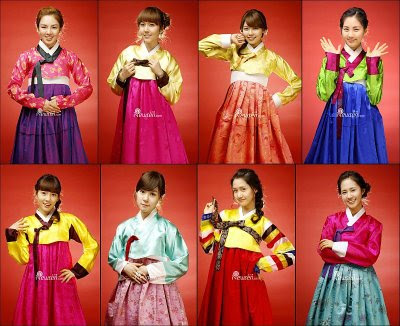
1. Hanbok (한복)
Austrian women's hanbok consists of a long skirt "china" and a bolero jacket styled "jeogori". Men's shirt featuring a short jacket "jeogori" and pants "baji". Both of these can hanbok wearing a long robe with a similar style called "durumagi". Today, the Korean people wear Hanbok mostly on holidays or celebrations like wedding or funeral.
2. Kimchi (김치) and Bulgogi (불고기) - Foods with health benefits
Bulgogi, which means barbecue, the popular dish of Koreans and Chinese cabbage salad kimchi- spicy salt. Bulgogi made from any type of meat, although beef and pork is the meat most often used. Spices are an important factor determining the success of the dish of kimchi and bulgogi.
Kimchi can be made from many different types of vegetables, which are used as much as cabbage and radish. Vegetables are brine and rinse. Once drained, it is mixed with spice cabbage and radish. Kimchi provide fewer calories and cholesterol but high in fiber. Kimchi even provide more vitamins than apples. So, who told me the news that "eat kimchi every day from the doctor away".
3. Hangeul (한글) - Korean Alphabet
Hangeul alphabet was built from the 15th century by wise kings of the Joseon Dynasty - King Sejong. The alphabet consists of 14 consonants and 10 vowels. The combination of consonants and vowels to form syllables, so Hangeul alphabet could generate thousands of letters and can pivot to make any public tone. Because relatively simple and limited number, Hangeul is easy to learn. Illiteracy is almost non-existent in Korea through the alphabet this easy to use.
4. Jongmyo Jeryeak (종묘 제례악) - Music Jongmyo sacrifice
On the first Sunday of the year thangNam, descendant of the clan of Jeonju Yi, about the same royal Joseon (1392-1910), ancestor worship ceremony at the Jongmyo Shrine in downtown Seoul. Although this ritual is celebrated in a brief ceremony a lot more than before, but there are 19 kinds of classical instruments, including chime stone, bronze bells, the drums, the sound Air Special traditional ceremony.
5. Talchum (탈춤) - Masks and masked dance
Masks, commonly known as "tal" in Korean, is made from paper, wood, dried gourd, and feathers. Most masks are reflected nuances and facial bone structure Koreans but also some kind of mask showing the face of the gods and animals, including realistic and fantasy. The shape of the masks were often strange and stylized, because "talchum" - type mask dance is performed at night, hostage in the light of the fire.
Mask Dance is essentially folk art forms the natural development of the People's Joseon period, a period when there is little distinction between the ruling class and social elite to the common people. Actors artists and audiences together to integrate into dances jubilantly at the end of each show.
6. Ginseng (고려 인삼)
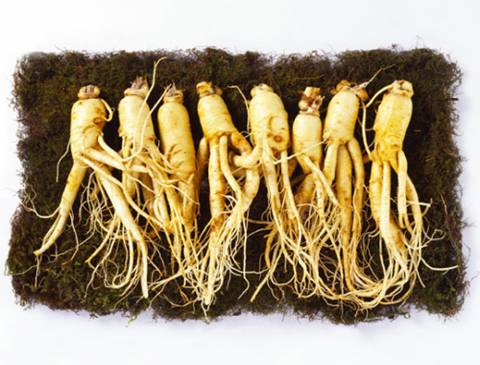
Ginseng is widely grown in South Korea because of climatic and soil conditions are suitable here. To distinguish the ginseng grown in Korea with products originating in the world, Korean ginseng was named "Goryeong Ginseng" name Goryeo Dynasty - Dynasty has formed Korean name in English is Korea.
Ginseng is used as a booster dose of energy and recharge. It is believed that ginseng helps to strengthen the functioning of the vital organs in the body, cardiac stability, protect the stomach, enhance endurance and stability of the nervous system. Ginseng is a core element in Oriental medicine, but people often use ginseng Korea simpler way is to drink tea or wine.
7. Bulguksa Temple (불국사) and Seokguram Grotto (석굴암)
Bulguksa, is one of the largest Buddhist temple and the most beautiful Korea, located in Gyeongju, formerly the capital of the Silla Kingdom (57 BC -935 AD). Bulguksa originally a small temple where the king Beop-Heung (514 -540) first Silla Buddhist devotee, was built to pray for prosperity and peace to his kingdom. Current architecture of the temple has since 751 when it is being rebuilt.
Previously, the temple consists of 80 buildings, more than ten times the amount remaining until now. The temple is located on a high mountain, behind the Seokguram, dynamic artificial stone is known as one of the most beautiful of Buddhism. Seokguram consists of a rectangular hall, and a vaulted aisle with ceiling circular corridor also connects with built in a rectangular shape. Seokguram and Bulguksa was included in the list of world cultural heritage by UNESCO since 1995
8. Mount Seoraksan (설악산)
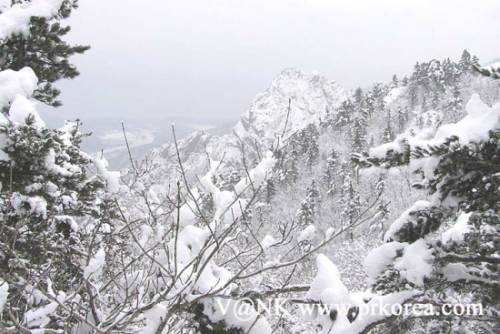
Korean peninsula have two beautiful mountains are mountains and mountains in Korea Seoraksan Geumgangsan in DPRK. Seoraksan is extended ridges of mountains Geumgangsan southbound, commonly known under the name of Mount Kumgang of the DPRK.
Seoraksan mountain forests with the highest peak is 1708 meters above sea level, the forest is a mixture of large canopy trees with many plants originating from the Alps and the conical fruit trees, is the residence of 939 species of plants and 25 species of mammals, 90 birds, 11 reptiles, 9 species bipolar, 360 insects and 40 species of freshwater fish.
9. Korean Art (세계적인 예술인)
And violinist Sarah Chang Soprano Jo Su Mi Artists
Koreans express their talents in music and art. Sarah Chang violinist was the first album when he was nine years old. One other famous violinist Chung Korean Kyung-wha holds the title one of the musicians are most welcome on the world stage for 25 years. Soprano Jo Su-artist is mi talented conductor Herbert von Karajan discovered and the Review of the conductor Herbert, she had singing "windfalls".
Many people would be surprised as Paik Nam-june, a native of South Korea, was dubbed the "father of video art", began his career as a musician and composer. In 1963 he became the first television equipment exhibition. Since then, Paik has influenced contemporary art, video and television over the world connecting works of art, media, technology, pop culture and new art genres.
10. Heritage print
Art print on wood slabs starting from the 8th century in Korea. Sets first metal in the world is a Korean developed before the invention of Gutenberg (Germany) 200 nam.Thuong people Goryeo Dynasty (918-1392) did the Ministry of Koreana Buddhist scriptures from the 13th century, and is recognized as Buddhist woodblocks oldest surviving. Koreana Buddhist sutras has been put on UNESCO's cultural heritage in 1995.
11. Traditional Musical Instruments
12-string gayageum Forum
There are about 60 traditional instruments of South Koreans have been passed down through generations. Includes 12 zither strings "gayageum" (가야금) and above 6 wires "geomungo" (거문고), both of this instrument are determined to emerge from the 6th century.
6 wire above Geomungo
Korean traditional musical instruments are divided into three groups of strings, winds and percussion herd. Art troupes Kim Duk-Samullori quartet soo very popular at home and abroad because of the creativity in combining traditional melodies and modern to create a very unique genre.
The traditional stringed zither and percussion including kkwaenggwari (small gong), jing (gong larger kkwaenggwari), Janggu (hourglass-shaped drum), and buk (drum).
12. Dangcheong: decoration on buildings
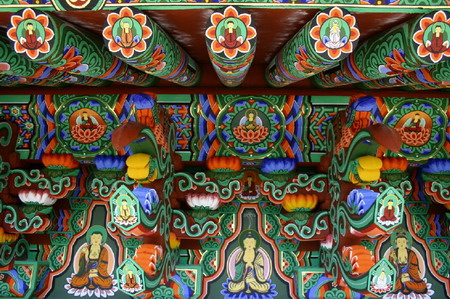
Dangcheong is color decoration Korean style on the roof of the building and decorative images showing the beauty and value of true art. Dangcheong of five colors: red, blue, yellow, black and white. Besides the decorative function, can also be used to nhungmuc dangcheong actual destination.
Dangcheong be used to protect the surface of the building and cover the rough spots in the material used, while emphasizing the characteristics and represents the level of the building or any object. Dancheong in most traditional buildings, including temples regardless located in Seoul and other provinces.
13. Pattern
The pattern motifs often rooted in the ancient texts. Initially it is a tool to express the emotional needs of the human environment, and then developed into an art deco pattern.
Among the common pattern is used in Korean traditional dragons and phoenix, and "taegeuk" (태극) Korean flag used in Taegeuki, including two opposition figure represents yin and yang, the two symbolize the power of the universe, for static and dynamic, the weak and the strong, dark and light, male and female. There are also patterns symbolizing longevity, such as rocks, mountains, water, clouds, tree, turtle, deer, cranes, and the sun.
14. Jasu- Art Embroidery
Embroidery is done on materials and decorative fabrics such as folding screens. Embroidery is also used to decorate many items in the home, the pillow, cover glass, curtains and bags of tobacco, spoon and chopsticks, toothbrushes.
Time away, civilians must not wear cloth embroidery, except wear tuxedo anniversary. Unlike the art serves purely decorative purposes, Jaju decorated Buddhist temples, statues, exclusively for religious
15. Bojagi - Upholstery
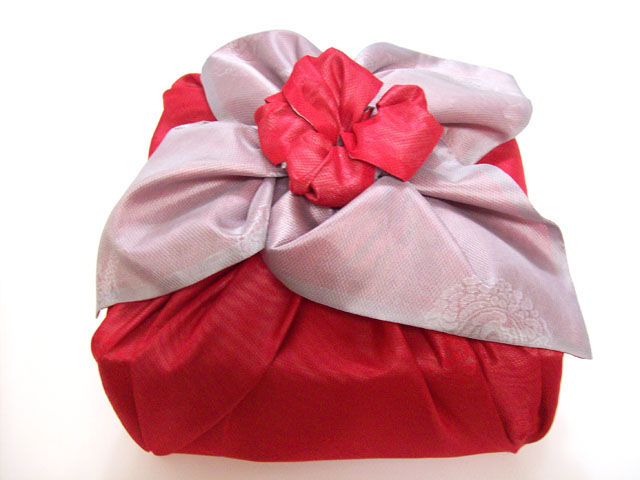
Bojagi is a square piece of cloth fringed with the size, color, different decoration, Koreans used to wrap, package items. Bojagi still used today, though not as popular as before. Even so they still do to serve daily life, bojagi increases and stylish uniqueness of ceremonies.
Beauty of Korean ethnicity are particularly clearly reflected through these pieces is bojagi housewives hands clasped together to save pieces of fabric scraps, rags. The embroidery and other motifs make bojagi more graceful. When not in use, can be folded bojagi like a small handkerchief.
16. Art handmade paper folding
Koreans have a long tradition in the art of paper folding craft and also have long used the paper to fold up the high quality of the box, bowl with lid, large bowls, baskets, mesh bags , vases and ashtrays.
The other paper products manually frequent visitors as stationery, foot mats, cushions, curtains, bags quiver, ink grinding bowls, boxes of gunpowder, shoes, washbasin, teapot. Most products are made from paper gloss paint on the surface increases the aesthetic and durability make them about the same copper-resistant. Coverings is often used as a mixture of water and green persimmons rice and perilla oil reservoir.
17. Folk Painting
Folk paintings including works that are often times far Koreans often used to decorate the house or to express their wishes about life lasting happiness. Unlike the classic paintings often focus topping describe landscapes, flowers and birds, folk paintings express ideas often humorous, simple and naive thoughts about life and about the budget world.
Folk paintings are the works of the artists belonging to the lower strata of the old society, but their paintings to be all classes of society, from the royal family and the temple to farmers in the remote village on display. The folk paintings often daring mix, reflecting the artist's own Hotwire and use bold colors.
18. Sesi - Traditional Practices
"Sebae" is practised thậm in preschools to the eldest persons and kids get sweets in return for bowing.
Sesi practices include ritual is celebrated on the time of season during the year and the day of Lunar New Year. For example, on New Year festival, the Koreans took all ancestors and perform memorial services for the food and beverage items. After this ritual, ceremony "sebae" or the bow of the elderly in the family. On the night of January 15 - the first full moon day of the year, called "daeboreum", an effigy made of straw will be thrown into the river.
Teok songpyeon 1 cake, usually made on the occasion of Chuseok (Thanksgiving - Thanks giving day)
Many places in the country have this custom, but the preparation and enjoyment of food with seasonal vegetables diversity remains to be done everywhere. 15-8 lunar day is Chuseok, a form of thanksgiving to God for the harvest, for this day, people often go to visit ancestral graves. One of the special dishes prepared for this feast is "songpyeon" (송편), crescent-shaped cake made from glutinous flour in with sesame, green beans nuts and other grains.
19. The adult ritual
In Korea, the stage where each person must undergo in the orang and mark a fundamental change therefor are referred to as "Gwanhongsangje" (Quan-Kiss-Tang-Te), including adult ceremony, the ceremony marriage, funeral and ancestral sacrifices.
Adult ceremony usually very simple. The boys grew up long hair rolled into a bun on top of his head and was given a traditional hat of the Korean nation made from horsetail. The girls grew up in two pigtails braided hair and hair set into jewelry called binyeo (비녀).
The wedding was held at the bride's family and newlyweds usually stay two or three days at the bride's family before returning home pay is celebrated re.Tang under traditional Korean etiquette very picky . Mourning period lasts for two years, after a series of rituals praying. Besides the elaborate funeral rites, the Koreans also perform many other worship related between life and death.
20. Garden scene
The essential concept behind the Korean garden art is to make the scene more natural garden itself initially. In many cases, multiple gardens look completely like a work of nature, it is a huge effort by the artists. One of the landscape is the best preserved royal garden in the lake Anapji (안압지) in Gyeongju, Gyeongsangbuk-do.
And nothing can compare to the beauty of the garden of the Changdeokgung Palace in Seoul, measuring 300,000 m2 on a total area of 405 636 m2 area of the palace. The garden is arranged gardens, lobby, lotus ponds, stone bridges, stairs, gutters and small streams meandering amidst thick forest and all the other elements of a traditional Korean garden Nations.
In addition, HQ also boasts a martial art Taekwondo (태권도)
Taekwondo is a sport to be officially recognized throughout the world originates from Korea. This sport is now popular in many countries worldwide. Taekwondo is a sport to apply the whole body, especially the arms and legs. It not only enhances the strength of the players, but also cultivates character contribute through training both physically and mentally. Along with a variety of techniques and principles, considered the sport Taekwondo is a martial self-defense.
Evidence of the presence of Taekwondo as a safeguard operation system can be found in the official game played trillion performed during religious festivals in the times of ancient tribal nations. During religious ceremonies such as Yeonggo and Dongmaeng (a Thanksgiving), and Mucheon (dance paradise), ancient Koreans made unique movements to physical training. This movement is the beginning of Taekwondo martial.
With base stems historic, taekwondo (also known as the neck rather than taekkyeon) has become a symbol for the traditional martial arts of Korea. During the Three Kingdoms, martial arts taekkyeon is required by the military, martial arts to strengthen defense and combat capability of the country, and trained at Musadan (a military organization ) to assume responsibility for national defense.

1. Hanbok (한복)
Austrian women's hanbok consists of a long skirt "china" and a bolero jacket styled "jeogori". Men's shirt featuring a short jacket "jeogori" and pants "baji". Both of these can hanbok wearing a long robe with a similar style called "durumagi". Today, the Korean people wear Hanbok mostly on holidays or celebrations like wedding or funeral.
2. Kimchi (김치) and Bulgogi (불고기) - Foods with health benefits
Bulgogi, which means barbecue, the popular dish of Koreans and Chinese cabbage salad kimchi- spicy salt. Bulgogi made from any type of meat, although beef and pork is the meat most often used. Spices are an important factor determining the success of the dish of kimchi and bulgogi.
Kimchi can be made from many different types of vegetables, which are used as much as cabbage and radish. Vegetables are brine and rinse. Once drained, it is mixed with spice cabbage and radish. Kimchi provide fewer calories and cholesterol but high in fiber. Kimchi even provide more vitamins than apples. So, who told me the news that "eat kimchi every day from the doctor away".
3. Hangeul (한글) - Korean Alphabet
Hangeul alphabet was built from the 15th century by wise kings of the Joseon Dynasty - King Sejong. The alphabet consists of 14 consonants and 10 vowels. The combination of consonants and vowels to form syllables, so Hangeul alphabet could generate thousands of letters and can pivot to make any public tone. Because relatively simple and limited number, Hangeul is easy to learn. Illiteracy is almost non-existent in Korea through the alphabet this easy to use.
4. Jongmyo Jeryeak (종묘 제례악) - Music Jongmyo sacrifice
On the first Sunday of the year thangNam, descendant of the clan of Jeonju Yi, about the same royal Joseon (1392-1910), ancestor worship ceremony at the Jongmyo Shrine in downtown Seoul. Although this ritual is celebrated in a brief ceremony a lot more than before, but there are 19 kinds of classical instruments, including chime stone, bronze bells, the drums, the sound Air Special traditional ceremony.
5. Talchum (탈춤) - Masks and masked dance
Masks, commonly known as "tal" in Korean, is made from paper, wood, dried gourd, and feathers. Most masks are reflected nuances and facial bone structure Koreans but also some kind of mask showing the face of the gods and animals, including realistic and fantasy. The shape of the masks were often strange and stylized, because "talchum" - type mask dance is performed at night, hostage in the light of the fire.
Mask Dance is essentially folk art forms the natural development of the People's Joseon period, a period when there is little distinction between the ruling class and social elite to the common people. Actors artists and audiences together to integrate into dances jubilantly at the end of each show.
6. Ginseng (고려 인삼)

Ginseng is widely grown in South Korea because of climatic and soil conditions are suitable here. To distinguish the ginseng grown in Korea with products originating in the world, Korean ginseng was named "Goryeong Ginseng" name Goryeo Dynasty - Dynasty has formed Korean name in English is Korea.
Ginseng is used as a booster dose of energy and recharge. It is believed that ginseng helps to strengthen the functioning of the vital organs in the body, cardiac stability, protect the stomach, enhance endurance and stability of the nervous system. Ginseng is a core element in Oriental medicine, but people often use ginseng Korea simpler way is to drink tea or wine.
7. Bulguksa Temple (불국사) and Seokguram Grotto (석굴암)
Bulguksa, is one of the largest Buddhist temple and the most beautiful Korea, located in Gyeongju, formerly the capital of the Silla Kingdom (57 BC -935 AD). Bulguksa originally a small temple where the king Beop-Heung (514 -540) first Silla Buddhist devotee, was built to pray for prosperity and peace to his kingdom. Current architecture of the temple has since 751 when it is being rebuilt.
Previously, the temple consists of 80 buildings, more than ten times the amount remaining until now. The temple is located on a high mountain, behind the Seokguram, dynamic artificial stone is known as one of the most beautiful of Buddhism. Seokguram consists of a rectangular hall, and a vaulted aisle with ceiling circular corridor also connects with built in a rectangular shape. Seokguram and Bulguksa was included in the list of world cultural heritage by UNESCO since 1995
8. Mount Seoraksan (설악산)

Korean peninsula have two beautiful mountains are mountains and mountains in Korea Seoraksan Geumgangsan in DPRK. Seoraksan is extended ridges of mountains Geumgangsan southbound, commonly known under the name of Mount Kumgang of the DPRK.
Seoraksan mountain forests with the highest peak is 1708 meters above sea level, the forest is a mixture of large canopy trees with many plants originating from the Alps and the conical fruit trees, is the residence of 939 species of plants and 25 species of mammals, 90 birds, 11 reptiles, 9 species bipolar, 360 insects and 40 species of freshwater fish.
9. Korean Art (세계적인 예술인)
And violinist Sarah Chang Soprano Jo Su Mi Artists
Koreans express their talents in music and art. Sarah Chang violinist was the first album when he was nine years old. One other famous violinist Chung Korean Kyung-wha holds the title one of the musicians are most welcome on the world stage for 25 years. Soprano Jo Su-artist is mi talented conductor Herbert von Karajan discovered and the Review of the conductor Herbert, she had singing "windfalls".
Many people would be surprised as Paik Nam-june, a native of South Korea, was dubbed the "father of video art", began his career as a musician and composer. In 1963 he became the first television equipment exhibition. Since then, Paik has influenced contemporary art, video and television over the world connecting works of art, media, technology, pop culture and new art genres.
10. Heritage print
Art print on wood slabs starting from the 8th century in Korea. Sets first metal in the world is a Korean developed before the invention of Gutenberg (Germany) 200 nam.Thuong people Goryeo Dynasty (918-1392) did the Ministry of Koreana Buddhist scriptures from the 13th century, and is recognized as Buddhist woodblocks oldest surviving. Koreana Buddhist sutras has been put on UNESCO's cultural heritage in 1995.
11. Traditional Musical Instruments
12-string gayageum Forum
There are about 60 traditional instruments of South Koreans have been passed down through generations. Includes 12 zither strings "gayageum" (가야금) and above 6 wires "geomungo" (거문고), both of this instrument are determined to emerge from the 6th century.
6 wire above Geomungo
Korean traditional musical instruments are divided into three groups of strings, winds and percussion herd. Art troupes Kim Duk-Samullori quartet soo very popular at home and abroad because of the creativity in combining traditional melodies and modern to create a very unique genre.
The traditional stringed zither and percussion including kkwaenggwari (small gong), jing (gong larger kkwaenggwari), Janggu (hourglass-shaped drum), and buk (drum).
12. Dangcheong: decoration on buildings

Dangcheong is color decoration Korean style on the roof of the building and decorative images showing the beauty and value of true art. Dangcheong of five colors: red, blue, yellow, black and white. Besides the decorative function, can also be used to nhungmuc dangcheong actual destination.
Dangcheong be used to protect the surface of the building and cover the rough spots in the material used, while emphasizing the characteristics and represents the level of the building or any object. Dancheong in most traditional buildings, including temples regardless located in Seoul and other provinces.
13. Pattern
The pattern motifs often rooted in the ancient texts. Initially it is a tool to express the emotional needs of the human environment, and then developed into an art deco pattern.
Among the common pattern is used in Korean traditional dragons and phoenix, and "taegeuk" (태극) Korean flag used in Taegeuki, including two opposition figure represents yin and yang, the two symbolize the power of the universe, for static and dynamic, the weak and the strong, dark and light, male and female. There are also patterns symbolizing longevity, such as rocks, mountains, water, clouds, tree, turtle, deer, cranes, and the sun.
14. Jasu- Art Embroidery
Embroidery is done on materials and decorative fabrics such as folding screens. Embroidery is also used to decorate many items in the home, the pillow, cover glass, curtains and bags of tobacco, spoon and chopsticks, toothbrushes.
Time away, civilians must not wear cloth embroidery, except wear tuxedo anniversary. Unlike the art serves purely decorative purposes, Jaju decorated Buddhist temples, statues, exclusively for religious
15. Bojagi - Upholstery

Bojagi is a square piece of cloth fringed with the size, color, different decoration, Koreans used to wrap, package items. Bojagi still used today, though not as popular as before. Even so they still do to serve daily life, bojagi increases and stylish uniqueness of ceremonies.
Beauty of Korean ethnicity are particularly clearly reflected through these pieces is bojagi housewives hands clasped together to save pieces of fabric scraps, rags. The embroidery and other motifs make bojagi more graceful. When not in use, can be folded bojagi like a small handkerchief.
16. Art handmade paper folding
Koreans have a long tradition in the art of paper folding craft and also have long used the paper to fold up the high quality of the box, bowl with lid, large bowls, baskets, mesh bags , vases and ashtrays.
The other paper products manually frequent visitors as stationery, foot mats, cushions, curtains, bags quiver, ink grinding bowls, boxes of gunpowder, shoes, washbasin, teapot. Most products are made from paper gloss paint on the surface increases the aesthetic and durability make them about the same copper-resistant. Coverings is often used as a mixture of water and green persimmons rice and perilla oil reservoir.
17. Folk Painting
Folk paintings including works that are often times far Koreans often used to decorate the house or to express their wishes about life lasting happiness. Unlike the classic paintings often focus topping describe landscapes, flowers and birds, folk paintings express ideas often humorous, simple and naive thoughts about life and about the budget world.
Folk paintings are the works of the artists belonging to the lower strata of the old society, but their paintings to be all classes of society, from the royal family and the temple to farmers in the remote village on display. The folk paintings often daring mix, reflecting the artist's own Hotwire and use bold colors.
18. Sesi - Traditional Practices
"Sebae" is practised thậm in preschools to the eldest persons and kids get sweets in return for bowing.
Sesi practices include ritual is celebrated on the time of season during the year and the day of Lunar New Year. For example, on New Year festival, the Koreans took all ancestors and perform memorial services for the food and beverage items. After this ritual, ceremony "sebae" or the bow of the elderly in the family. On the night of January 15 - the first full moon day of the year, called "daeboreum", an effigy made of straw will be thrown into the river.
Teok songpyeon 1 cake, usually made on the occasion of Chuseok (Thanksgiving - Thanks giving day)
Many places in the country have this custom, but the preparation and enjoyment of food with seasonal vegetables diversity remains to be done everywhere. 15-8 lunar day is Chuseok, a form of thanksgiving to God for the harvest, for this day, people often go to visit ancestral graves. One of the special dishes prepared for this feast is "songpyeon" (송편), crescent-shaped cake made from glutinous flour in with sesame, green beans nuts and other grains.
19. The adult ritual
In Korea, the stage where each person must undergo in the orang and mark a fundamental change therefor are referred to as "Gwanhongsangje" (Quan-Kiss-Tang-Te), including adult ceremony, the ceremony marriage, funeral and ancestral sacrifices.
Adult ceremony usually very simple. The boys grew up long hair rolled into a bun on top of his head and was given a traditional hat of the Korean nation made from horsetail. The girls grew up in two pigtails braided hair and hair set into jewelry called binyeo (비녀).
The wedding was held at the bride's family and newlyweds usually stay two or three days at the bride's family before returning home pay is celebrated re.Tang under traditional Korean etiquette very picky . Mourning period lasts for two years, after a series of rituals praying. Besides the elaborate funeral rites, the Koreans also perform many other worship related between life and death.
20. Garden scene
The essential concept behind the Korean garden art is to make the scene more natural garden itself initially. In many cases, multiple gardens look completely like a work of nature, it is a huge effort by the artists. One of the landscape is the best preserved royal garden in the lake Anapji (안압지) in Gyeongju, Gyeongsangbuk-do.
And nothing can compare to the beauty of the garden of the Changdeokgung Palace in Seoul, measuring 300,000 m2 on a total area of 405 636 m2 area of the palace. The garden is arranged gardens, lobby, lotus ponds, stone bridges, stairs, gutters and small streams meandering amidst thick forest and all the other elements of a traditional Korean garden Nations.
In addition, HQ also boasts a martial art Taekwondo (태권도)
Taekwondo is a sport to be officially recognized throughout the world originates from Korea. This sport is now popular in many countries worldwide. Taekwondo is a sport to apply the whole body, especially the arms and legs. It not only enhances the strength of the players, but also cultivates character contribute through training both physically and mentally. Along with a variety of techniques and principles, considered the sport Taekwondo is a martial self-defense.
Evidence of the presence of Taekwondo as a safeguard operation system can be found in the official game played trillion performed during religious festivals in the times of ancient tribal nations. During religious ceremonies such as Yeonggo and Dongmaeng (a Thanksgiving), and Mucheon (dance paradise), ancient Koreans made unique movements to physical training. This movement is the beginning of Taekwondo martial.
With base stems historic, taekwondo (also known as the neck rather than taekkyeon) has become a symbol for the traditional martial arts of Korea. During the Three Kingdoms, martial arts taekkyeon is required by the military, martial arts to strengthen defense and combat capability of the country, and trained at Musadan (a military organization ) to assume responsibility for national defense.
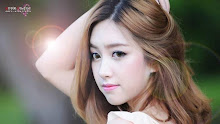



No comments :
Post a Comment